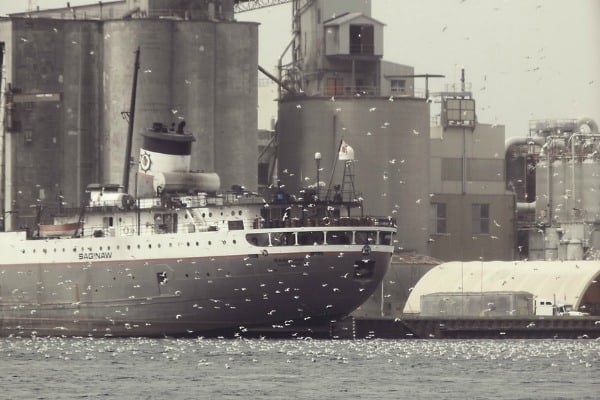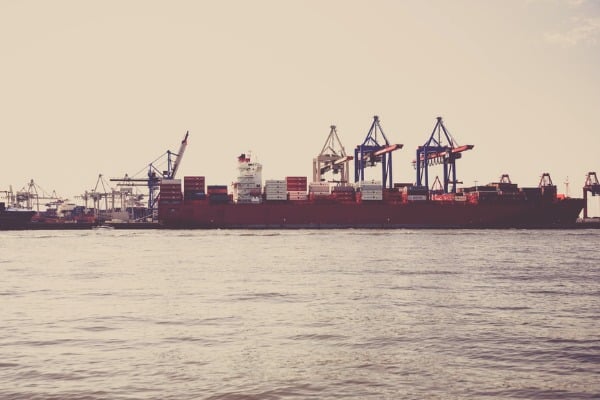While Australia’s economy is booming in the world market, our country is in dire need of infrastructure improvements to support our freight logistics industry—and to keep us competitive in servicing our overseas customers.
With our freight movements set to double by 2030, coastal shipping modes could present a sustainable option to connecting ports and regional areas across the country—and overhaul our heavily burdened system into a more efficient and reliable network.
Sea freight to reduce pressure on road transport
Our capacity to meet the international demand for our goods and services is reliant on our logistics industry finding solutions to the growing pressure on our ground freight services.
Typically, Australia has always relied on sea freight for international shipping, and our imports and exports are still as reliant on it as it is on air freight. But Australia is disproportionately dependent on road transport between cities for freight within the country—and while this has been incredibly beneficial for our road freight industry, the increasing burden on our road networks means that we need solutions that will increase our productivity by alleviating pressure on them.
Through sea freight, the pressure on road transport is substantially reduced.
Most of the search for solutions has been directed at improving our rail networks, which are also badly in need of attention. But even in comprehensive reviews of Australia’s infrastructure, sea freight has been largely overlooked as a viable option for domestic runs—until recent research put it back in the spotlight.
Improving port facilities to benefit sea freight
Australia’s ports are increasingly burdened by our thriving economy, and calls have been made for both government and industry attention to our port constraints. This is particularly evident in Queensland’s Port of Brisbane, where the state’s economic potential is expected to suffer from heavy reliance on ground transport—the situation is considered unsustainable, and if the state and the country are to remain globally competitive in the future, a more balanced modal share approach to our freight logistics systems needs to be planned.
Coastal shipping has a great potential to ease the congestion on our roads, by reducing heavy vehicle traffic and bypassing bottlenecks—and it could help to balance the shares between our transport modes in both our domestic and international transport sectors. It’s widely recognised that upgrading the country’s port facilities will be an important element in improving the wider transport infrastructure and networks—it will improve both sea freight services, and fortify connections between road, rail and international shipping.
Sea freight’s potential and viability
Coastal shipping for long haul transportation offers opportunities for improvements to freight transport along the longer corridors—and if current research is correct, it’s certain to prove a viable option.
Sea freight is a viable option.
While only holding a small piece of the total transport market volume, coastal shipping is a good option for long haul freight transport between the Eastern and Western states of Australia, which is why its share has been increasing over the last 20 years. Sea freight routes have actually have a greater modal share of the freight industry on routes between Western Australia and Melbourne, and from South Australia to the Eastern states where congestion makes the rail networks unreliable.
Within the industry, coastal shipping is considered a good option for long haul movements above 3,000 kilometres, with a particular strength for non-urgent freight. It’s a viable and cost effective alternative to ground transport, simply because it doesn’t require the same economic investment in maintenance and improvements that road and rail demand. And with fuel price increases, coastal shipping has another advantage over ground transport—its fuel consumption and costs are substantially less than road transport, making it a financially and environmentally viable option.
There will soon be new shipping services between Brisbane, Melbourne, and Sydney, and the sea freight sector is forecasted to solidly increase its freight movements by over 5% per year for the next 20 years—and with it, hopefully, Australia’s freight logistics efficiency.
Environmental benefits of sea freight
One of the most important reasons to increase sea transport’s modal share of Australia’s freight logistics market is its environmental advantage.
Shipping contributes a lot less to global world carbon dioxide emissions than all the other modes—especially ground transport. With further technical improvements to existing vessels, it would be possible to reduce emissions even further. Even a small shift towards sea freight could dramatically reduce the transport industry’s emissions and resource consumption.
The environmental benefits of sea freight are just the beginning.
Because shipping only contributes 2% of the transport industry’s emissions, it’s certainly a more sustainable transport option—particularly considering that the transport network contributes at least 14% of the nation’s emissions. Because the freight industry is responsible for such a large chunk of our environmental impact, substantial reductions in its emissions and consumption, even in one sector, could translate into significant improvements in the nation’s environmental sustainability.
There’s no doubt that more government involvement and better policy frameworks will benefit the industry. All our transport sectors need to be included if Australia’s logistics services are going to be able to support our growth, and with better investment initiatives, coastal shipping will have the capacity to complement road and rail services, and support a more integrated, more efficient, national transport system.
As a privately owned Australian company, SAL Global Logistics provides flexible solutions for all your importing and exporting needs. With services in air and ocean freight forwarding and shipping, customs consultancy, and logistics and supply chain management, we can keep your business viable in a competitive global market.
Call us anytime to see how we can personalise our services to your international logistical needs, and we’ll be happy to help.


